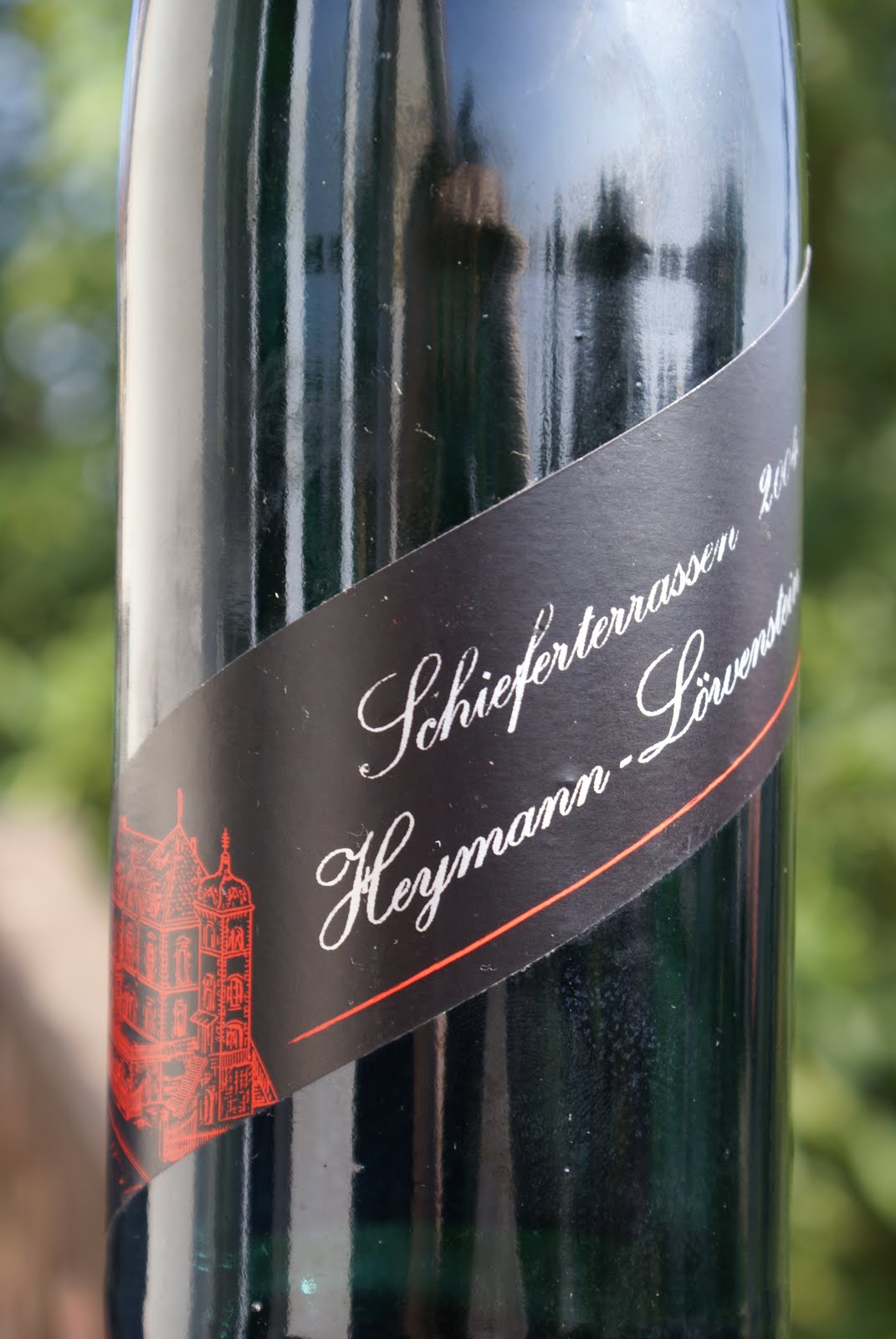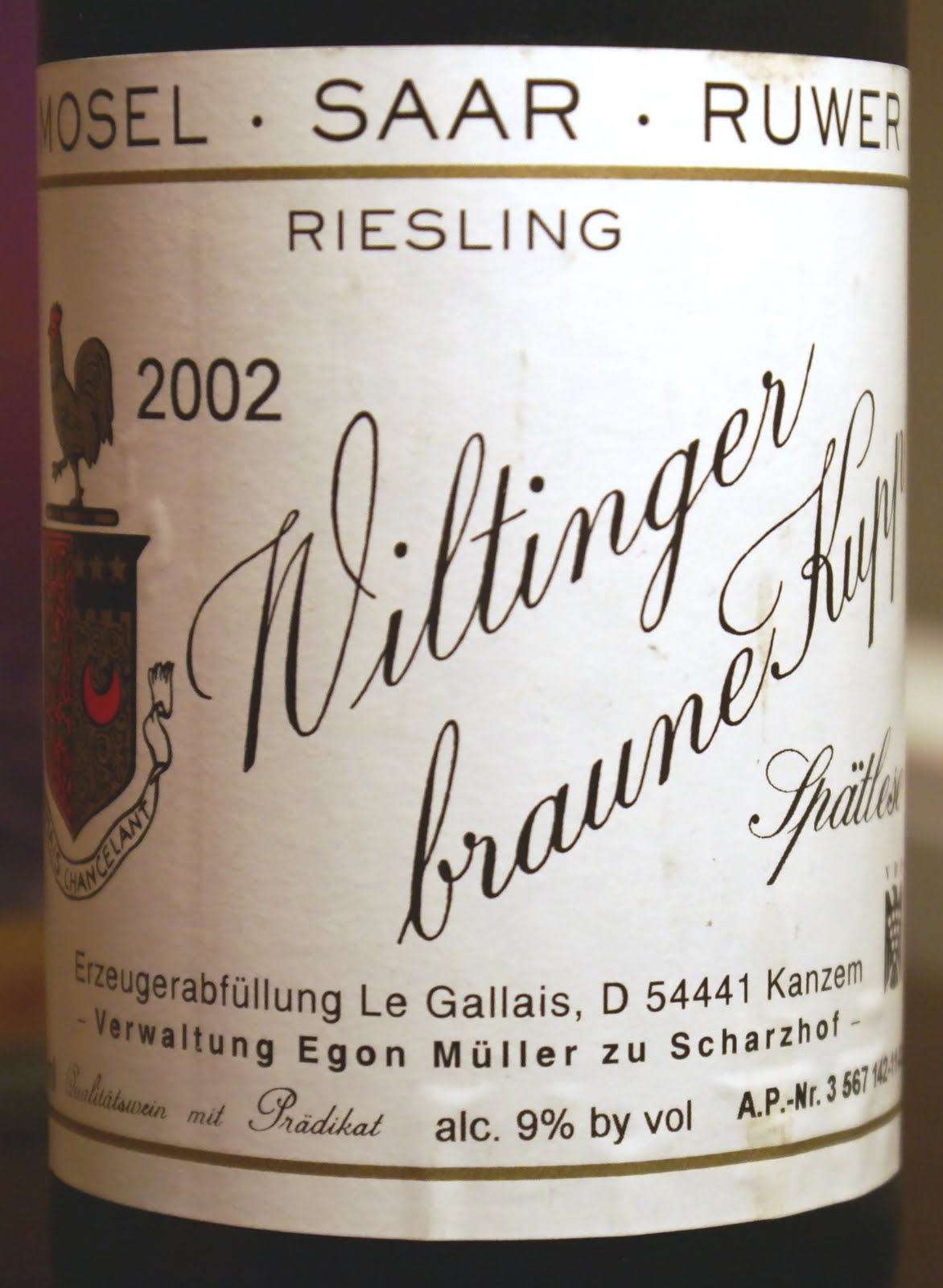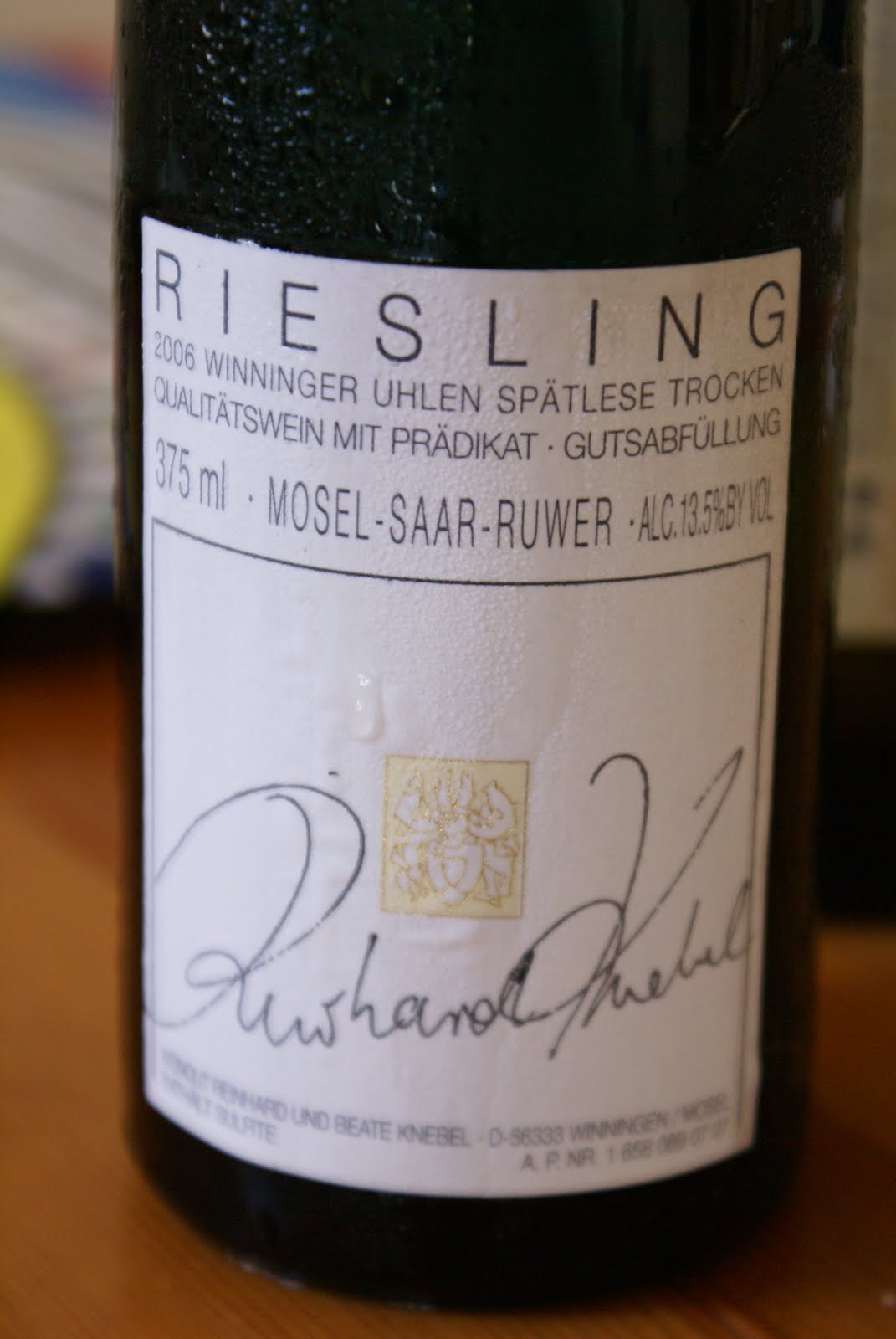The good, the bad and the sulphury
Posted on 8 October 2009
I have been drinking through a series of ambitious Rieslings recently, and it’s interesting what a mixed bunch they’ve been. Riesling is the wine lover’s puppy, having a unique ability to convey a sense of place and a natural tension between fruit, minerality, acidity and sugar. But it’s also a fairly demanding and capricious grape: the margin of error is smaller than when making Chardonnay or Syrah. Leave a bit too much sugar and your acidity will not balance the whole; pick the grapes a bit late for dry wine and alcohol will soar: while 13.5% in a Sauvignon Blanc is no big deal, it often spoils a good Riesling. Riesling is also one of the grapes, in my experience, with the highest incidence of corked bottles (the proportion of TCA taint is the same with other wines but it’s a lot easier to perceive in a filigree Riesling). And it’s extremely sensitive to tasting conditions.
I was reminded of this adage when I opened two bottles of Heymann-Löwenstein’s within a few days. The Schieferterrassen Riesling 2004 is Löwenstein’s entry-level bottling but proved extremely satisfying, with wonderful minerality, crystalline fruit and a great sense of balance. The Röttgen Erste Lage Riesling 2005 is a prestigious grand cru bottling that should show superior to the Schieferterrassen but didn’t. Sure, there was the same mineral signature of Löwenstein’s (ripe minerality reminiscent of warm sea: imagine a juxtaposition of Chablis and Santorini) but the wine seemed flat and overly sugary, with little fruit expression. It was purely a matter of momentary perception: on a cloudy, rainy day that was a ‘root day’ in the biodynamic calendar (the worst type of day to taste wines; look for flower days and fruit days for the best results) the wine just tasted opaque and fruitless.
The Egon Müller / Le Gallais Wiltinger Braune Kupp Riesling Spätlese 2002 and Joh. Jos. Prüm Graacher Himmelreich Riesling Auslese 1996 tasted alongside shared the same fate. They’ve now eaten their sulphur (of which the Prüm surely contained heroic amounts) and are showing some nice minerality but were neither very rich or expressive and for such prestigious bottlings, simple and underwhelming.
A few days later on a ‘flower day’, a bottle with far more modest pedigree just shone. The Winninger Uhlen Riesling Spätlese trocken 2006 from Reinhard & Beate Knebel in the lower Moselle was all a dry slate-grown Riesling should be: powerfully expressive, substantial, mineral and tense. It’s a fairly boisterous style with some botrytis grapes used for this wine, a deep orange colour, plenty of spice on nose and a broad, rich palate. Much an Auslese trocken in style, it’s a little unbalanced and perhaps controversial on less luckily bio-influenced day, but today it just tasted right.
Deep-coloured Riesling.





